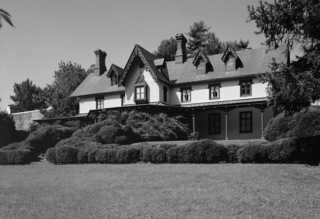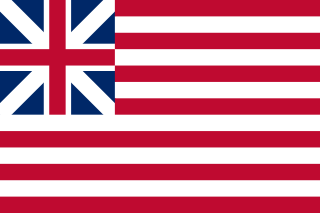Related Research Articles

Thomas Mifflin was an American merchant, soldier, and politician from Pennsylvania, who is regarded as a Founding Father of the United States for his roles during and after the American Revolution. Mifflin signed the United States Constitution, was the first governor of Pennsylvania, serving from 1790 to 1799, and was also the state's last president, succeeding Benjamin Franklin in 1788.

Timeline of the American Revolution—timeline of the political upheaval culminating in the 18th century in which Thirteen Colonies in North America joined together for independence from the British Empire, and after victory in the Revolutionary War combined to form the United States of America. The American Revolution includes political, social, and military aspects. The revolutionary era is generally considered to have begun with the passage of the Stamp Act in 1765 and ended with the ratification of the United States Bill of Rights in 1791. The military phase of the revolution, the American Revolutionary War, lasted from 1775 to 1783. A list of American Revolutionary War battles gives details.

The Province of Georgia was one of the Southern Colonies in colonial-era British America. In 1775 it was the last of the Thirteen Colonies to support the American Revolution.

John Dickinson, a Founding Father of the United States, was an attorney and politician from Philadelphia, Pennsylvania, and Wilmington, Delaware. Dickinson was known as the "Penman of the Revolution" for his twelve Letters from a Farmer in Pennsylvania, published individually in 1767 and 1768, and he also wrote "The Liberty Song" in 1768.

John Alsop Jr. was an American merchant and politician from New York City. As a delegate for New York to the Continental Congress from 1774 to 1776, he signed the 1774 Continental Association.

Richard Bland, sometimes referred to as Richard Bland II or Richard Bland of Jordan's Point, was an American Founding Father, planter, lawyer and politician from Virginia. A cousin and early mentor of Thomas Jefferson, Bland served 34 years in the Virginia General Assembly, and with John Robinson and this man's cousin Peyton Randolph as one of the most influential and productive burgesses during the last quarter century of the colonial period.

Thomas Willing was an American merchant, politician and slave trader who served as mayor of Philadelphia and was a delegate from Pennsylvania to the Continental Congress. He also served as the first president of the Bank of North America and the First Bank of the United States. During his tenure there he became the richest man in America.

Robert Robert Livingston, also called The Judge, was a prominent colonial American politician, and a leading Whig in New York in the years leading up to the American Revolution.

Noble Wimberly Jones was an American physician and statesman from Savannah, Georgia. A leading Georgia patriot in the American Revolution, he served as a delegate to the Continental Congress in 1781 and 1782.
John (Jehu) Davis was an American planter and politician from Mispillion Hundred, in Kent County, Delaware, west of Milford. He served in the Delaware General Assembly and as President of Delaware.

The Grange Estate, also known as Maen-Coch and Clifton Hall, is a historic mansion built by Henry Lewis Jr. (1671–1730) in Havertown, Pennsylvania, near Philadelphia. Parts of the residence are incorporated in the carriage house.

The United Colonies of North-America was the official name as used by the Second Continental Congress in Philadelphia for the newly formed proto-state comprising the Thirteen Colonies in 1775 and 1776, before and as independence was declared. Continental currency banknotes displayed the name 'The United Colonies' from May 1775 until February 1777, and the name was being used to refer to the colonies as a whole before the Second Congress met.

Samuel Powel was a colonial and post-revolutionary mayor of Philadelphia, Pennsylvania. Since Philadelphia's mayoral office had been abolished early in the revolutionary period, Powel was the last colonial mayor of the city and the first to serve after the United States gained independence from Great Britain.

Jehu Eyre or Ayer was an American businessman, veteran of the French and Indian War and American Revolutionary War, and member of the influential Eyre family, which played a major role in the American Revolution and the early Republic. Jehu's father George had emigrated to the New World in 1727; the family was descended from one of the oldest noble lines in England.
Manuel Eyre (1736–1805) was a colonel in the Continental Army, a shipbuilder, and the brother of Revolutionary War heroes Benjamin and Jehu Eyre.
Benjamin George Eyre, was a figure of the American Revolutionary War. Eyre served as a Lieutenant Colonel in the Continental Army, commanding the Second Battalion of the Pennsylvania Militia.

The Hutchinson letters affair was an incident that increased tensions between the colonists of the Province of Massachusetts Bay and the British government prior to the American Revolution.
USS Washington was a Continental Navy frigate laid down in 1776 but never completed.
George Hume Steuart, (1700–1784) was a Scottish physician, tobacco planter, and Loyalist politician in colonial Maryland. Born in Perthshire, Steuart emigrated to Maryland in around 1721, where he benefited from proprietarial patronage and was appointed to a number of colonial offices, eventually becoming a wealthy landowner with estates in both Maryland and Scotland, and serving two terms as mayor of Annapolis. However, he was forced by the outbreak of the American Revolution to decide whether to remain loyal to the Crown or to throw in his lot with the American rebels. In 1775 Steuart sailed to Scotland, deciding at age 75 that "he could not turn rebel in his old age". He remained there until his death in 1784.
The American Revolutionary War inflicted great financial costs on all of the combatants, including the United States, France, Spain and the Kingdom of Great Britain. France and Great Britain spent 1.3 billion livres and 250 million pounds, respectively. The United States spent $400 million in wages for its troops. Spain increased its military spending from 454 million reales in 1778 to over 700 million reales in 1781.
References
- ↑ "Washington". Archived from the original on 2004-03-14. Retrieved 2012-11-01.
- ↑ Jordan, J.W.; Jordan, W. (1911). Colonial and Revolutionary Families of Pennsylvania: Genealogical and Personal Memoirs. Vol. 2. Lewis Publishing Company. p. 1011. Retrieved 2017-01-11.
- ↑ Hume, H.; EYRE, E.J. (1867). The Life of Edward John Eyre, Late Governor of Jamaica. R. Bently. Retrieved 2017-01-11.
- 1 2 Hume, Hamilton (1867). "The Life of Edward John Eyre, Late Governor of Jamaica".
- 1 2 Nelson, W.; Van Doren Honeyman, A. (1894). Extracts from American Newspapers, Relating to New Jersey. 1704-1775: 1775. p. 495. Retrieved 2017-01-11.
- ↑ Jordan, J.W.; Jordan, W. (1911). Colonial and Revolutionary Families of Pennsylvania: Genealogical and Personal Memoirs. Vol. 2. Lewis Publishing Company. p. 1012. Retrieved 2017-01-11.
- 1 2 Ritter, A. (1860). Philadelphia and Her Merchants: As Constituted Fifty @ Seventy Years Ago : Illustrated by Diagrams of the River Front and Portraits of Some of the Prominent Occupants, Together with Sketches of Character and Incidents and Anecdotes of the Day. The author. p. 60. ISBN 9780608404004 . Retrieved 2017-01-11.
- ↑ "Punch Bowls And Punches". oldandsold.com. Retrieved 2017-01-11.
- ↑ "Papers of George Washington". Archived from the original on 2007-02-20. Retrieved 2007-02-08.
- ↑ Barnes & Noble. "No Results Page | Barnes & Noble". barnesandnoble.com. Retrieved 2017-01-11.
- ↑ Preston, D. (2001). A Comprehensive Catalogue of the Correspondence and Papers of James Monroe. Vol. 1. Greenwood Press. p. 413. ISBN 9780313318313 . Retrieved 2017-01-11.
- ↑ Clay, H.; Hay, M.P. (1992). The Papers of Henry Clay: Supplement, 1793-1852. University Press of Kentucky. p. 30. ISBN 9780813100616 . Retrieved 2017-01-11.
- ↑ "RootsWeb: PAPHILAD-L Manuel EYRE, Quaker merchant/patriot". archiver.rootsweb.ancestry.com. Retrieved 2017-01-11.
- ↑ Treman, E.M. (1901). The History of the Treman, Tremaine, Truman Family in America: With the Related Families of Mack, Dey, Board and Ayers; Being a History of Joseph Truman of New London, Conn. (1666); John Mack of Lyme, Conn. (1680); Richard Dey of New York City (1641); Cornelius Board of Boardville, N.J. (1730); John Ayer of Newbury, Mass. (1635); and Their Descendants. Vol. 2. Press of the Ithaca democrat. p. 1504. Retrieved 2017-01-11.
- ↑ "Ashhurst family Collection 290". findingaid.winterthur.org. Retrieved 2017-01-11.
- ↑ "Pierre Combret DE LANUX - Eliza EYRE". Archived from the original on 2012-03-11. Retrieved 2012-11-01.
- ↑ Monnett, Howard Norman (1931). "Van der Slice and Allied Families".